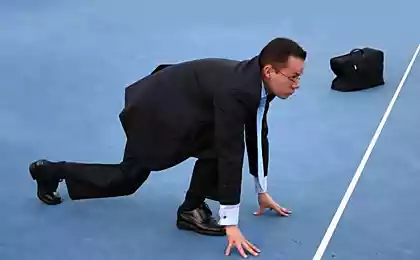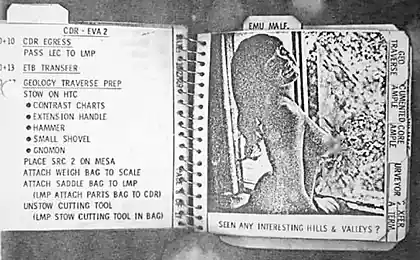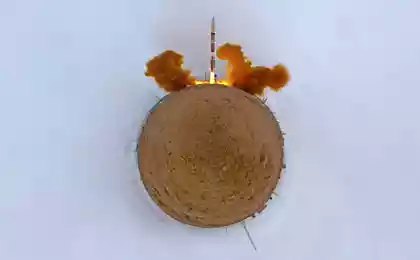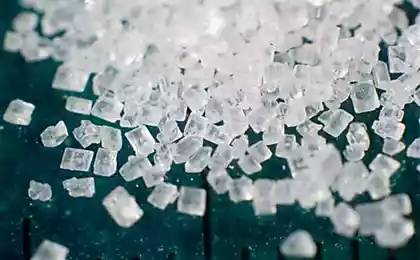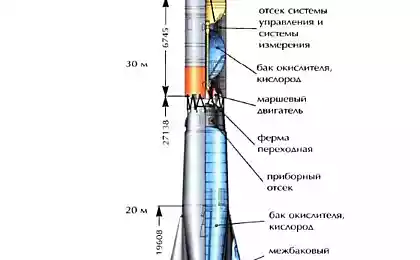1239
Space elevator - reality or myth !!! (6 photos)
The Japanese company Obayashi Corporation introduced the concept vehicle into space.
It will be a space elevator on Earth to orbit. The launch is scheduled for lift 2050.
But fifty years ago, people thought that the beginning of the 21st century space flights will be available to everyone, and more than once. Unfortunately this is not so.
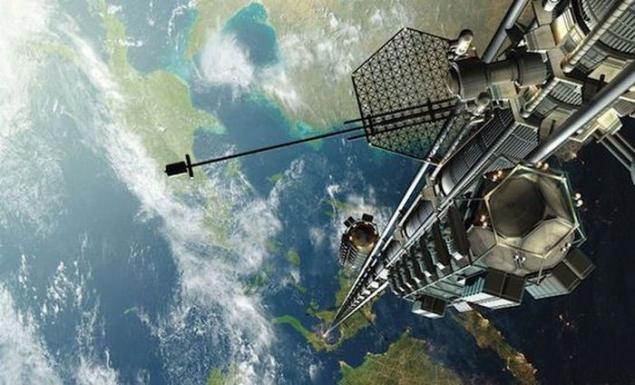
This elevator will lead from the Earth to the space station, located at an altitude of 36,000 kilometers.
But the length of the cable will be 96,000 kilometers. We need this in order to create a counterweight to the orbital.
In the future it may be used for the extension of the route of the elevator.
Elevator will move at a speed of 200 kilometers per hour and carry a many as 30 people.
So for the ultimate goal of this vehicle will take about 8 days.
On the space station will house laboratories and living quarters.
It sounds nice. But there are doubts about the impracticality of such an arrangement.
1. There is strong enough material for cable
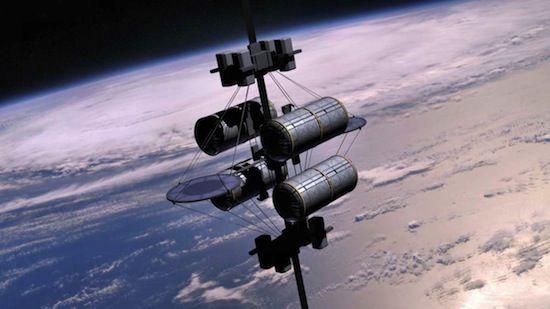
The load on the cable 000 can exceed 100 kg / m., As the material for its manufacture must possess extremely high strength to resist tensile and thus very low density. While this material is not - not even suitable carbon nanotubes, is now considered the most durable and elastic materials on the planet. Unfortunately, the technology of their production is only beginning to be developed. While that is possible to obtain tiny pieces of material: the longest nanotubes, which have managed to create - a couple of centimeters in length and a few nanometers in width. Will there ever be drawn from this long enough rope, is still unknown.
2. Susceptibility to dangerous vibrations
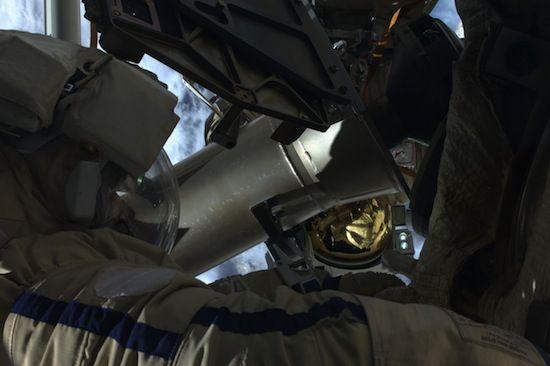
The cable will be susceptible to unpredictable gusts of solar wind - under its influence, he will bend, and this will adversely affect the stability of the lift. As stabilizers may be attached to the cable micromotors, but this measure creates additional difficulties in the maintenance facility. In addition, it can make progress on the rope special booths, so-called "climbers". Cable is likely to come into resonance with them.
3. The Coriolis force
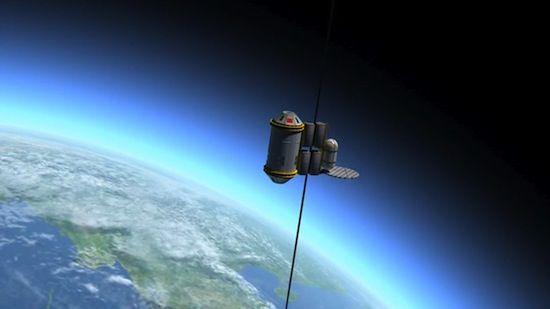
Cable and "climbers" are fixed relative to the Earth's surface. But with respect to the center of the Earth object will move at a speed of 1700 km / h at the surface and 10 000 km / h in orbit. Accordingly, the "mountaineers" have to make when you start this speed. "Climber" is dispersed in the direction perpendicular to the cable, and because of this cable is to swing like a pendulum. At the same time, a force trying to tear our rope from the Earth. The strength inversely proportional to the deflection of the rope and is directly proportional to the speed of lifting and weight. Thus, the Coriolis force prevents quick lift loads into geostationary orbit. Since the Coriolis force can be controlled simply by launching simultaneously two "climbers" - from Earth and orbit, but then the force between the two loads will stretch the rope even more. As an option - painfully slow rise in the crawler.
4. satellites and space debris
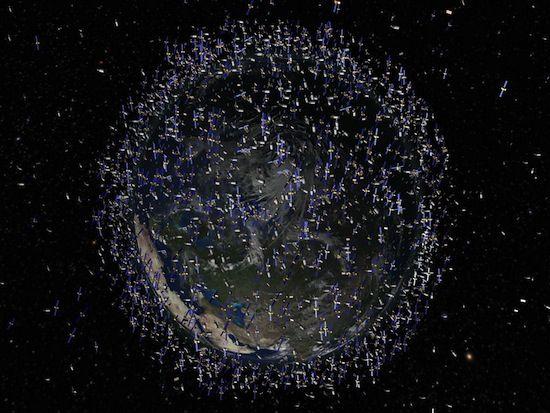
Over the past 50 years, humanity has launched a set of objects in space - and not very useful. Or the builders will have to lift it all to find and clean (which is impossible, given the number of usable satellites, or space telescope), or to provide a system which protects the object from the collision. Cable - theoretically fixed, so any body rotating around the earth, sooner or later will face him. In addition, the speed in the collision will be almost equal to the speed of rotation of the body, so that the rope is caused so much damage. To maneuver the cable can not, and has great length, so collisions are frequent. How to deal with, is not clear. Scientists talk about the construction of the orbital space lasers to burn trash, but that's just science fiction.
5. Social and environmental risks
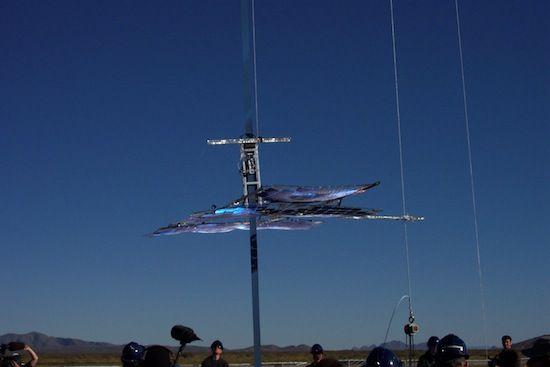
The space elevator could be the object of a terrorist attack. Successful sabotage operations cause great damage and may even bury the whole project, so that together with the elevator have to build around him and around the clock defense. Environmentalists, however, believe that the cable is, paradoxically, may shift the earth's axis. The cable is tightly fastened in orbit, and any displacement of the top of its impact on the Earth. By the way, can you imagine what would happen if he suddenly cut short? Thus, to implement such a project in the world is very difficult. And now the good news: it will work on the moon. The force of attraction on the moon is much less, and the atmosphere is virtually absent. The anchor can be created in the gravity field of the Earth, and the cable from the Moon will pass through the Lagrange point - so we get a communication channel between the planet and its natural satellite. Such a cable under favorable conditions, can pass into the orbit of the earth around 1,000 tonnes of cargo per day. The material, of course, require a heavy-duty, but nothing fundamentally new to invent not have to. However, the length of the "moon" lift should be about 190 000 km of the effect named Hohmann transfer orbit.
Source: www.factroom.ru
It will be a space elevator on Earth to orbit. The launch is scheduled for lift 2050.
But fifty years ago, people thought that the beginning of the 21st century space flights will be available to everyone, and more than once. Unfortunately this is not so.

This elevator will lead from the Earth to the space station, located at an altitude of 36,000 kilometers.
But the length of the cable will be 96,000 kilometers. We need this in order to create a counterweight to the orbital.
In the future it may be used for the extension of the route of the elevator.
Elevator will move at a speed of 200 kilometers per hour and carry a many as 30 people.
So for the ultimate goal of this vehicle will take about 8 days.
On the space station will house laboratories and living quarters.
It sounds nice. But there are doubts about the impracticality of such an arrangement.
1. There is strong enough material for cable

The load on the cable 000 can exceed 100 kg / m., As the material for its manufacture must possess extremely high strength to resist tensile and thus very low density. While this material is not - not even suitable carbon nanotubes, is now considered the most durable and elastic materials on the planet. Unfortunately, the technology of their production is only beginning to be developed. While that is possible to obtain tiny pieces of material: the longest nanotubes, which have managed to create - a couple of centimeters in length and a few nanometers in width. Will there ever be drawn from this long enough rope, is still unknown.
2. Susceptibility to dangerous vibrations

The cable will be susceptible to unpredictable gusts of solar wind - under its influence, he will bend, and this will adversely affect the stability of the lift. As stabilizers may be attached to the cable micromotors, but this measure creates additional difficulties in the maintenance facility. In addition, it can make progress on the rope special booths, so-called "climbers". Cable is likely to come into resonance with them.
3. The Coriolis force

Cable and "climbers" are fixed relative to the Earth's surface. But with respect to the center of the Earth object will move at a speed of 1700 km / h at the surface and 10 000 km / h in orbit. Accordingly, the "mountaineers" have to make when you start this speed. "Climber" is dispersed in the direction perpendicular to the cable, and because of this cable is to swing like a pendulum. At the same time, a force trying to tear our rope from the Earth. The strength inversely proportional to the deflection of the rope and is directly proportional to the speed of lifting and weight. Thus, the Coriolis force prevents quick lift loads into geostationary orbit. Since the Coriolis force can be controlled simply by launching simultaneously two "climbers" - from Earth and orbit, but then the force between the two loads will stretch the rope even more. As an option - painfully slow rise in the crawler.
4. satellites and space debris

Over the past 50 years, humanity has launched a set of objects in space - and not very useful. Or the builders will have to lift it all to find and clean (which is impossible, given the number of usable satellites, or space telescope), or to provide a system which protects the object from the collision. Cable - theoretically fixed, so any body rotating around the earth, sooner or later will face him. In addition, the speed in the collision will be almost equal to the speed of rotation of the body, so that the rope is caused so much damage. To maneuver the cable can not, and has great length, so collisions are frequent. How to deal with, is not clear. Scientists talk about the construction of the orbital space lasers to burn trash, but that's just science fiction.
5. Social and environmental risks

The space elevator could be the object of a terrorist attack. Successful sabotage operations cause great damage and may even bury the whole project, so that together with the elevator have to build around him and around the clock defense. Environmentalists, however, believe that the cable is, paradoxically, may shift the earth's axis. The cable is tightly fastened in orbit, and any displacement of the top of its impact on the Earth. By the way, can you imagine what would happen if he suddenly cut short? Thus, to implement such a project in the world is very difficult. And now the good news: it will work on the moon. The force of attraction on the moon is much less, and the atmosphere is virtually absent. The anchor can be created in the gravity field of the Earth, and the cable from the Moon will pass through the Lagrange point - so we get a communication channel between the planet and its natural satellite. Such a cable under favorable conditions, can pass into the orbit of the earth around 1,000 tonnes of cargo per day. The material, of course, require a heavy-duty, but nothing fundamentally new to invent not have to. However, the length of the "moon" lift should be about 190 000 km of the effect named Hohmann transfer orbit.
Source: www.factroom.ru








